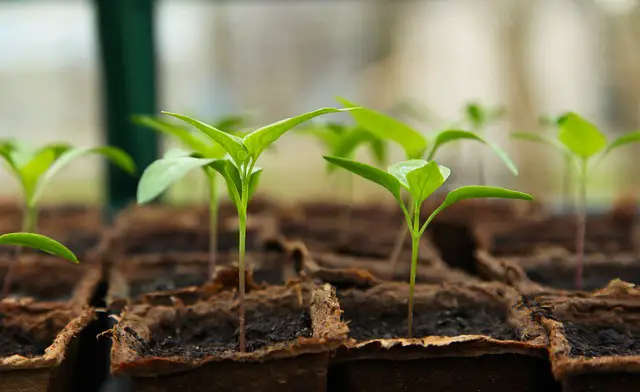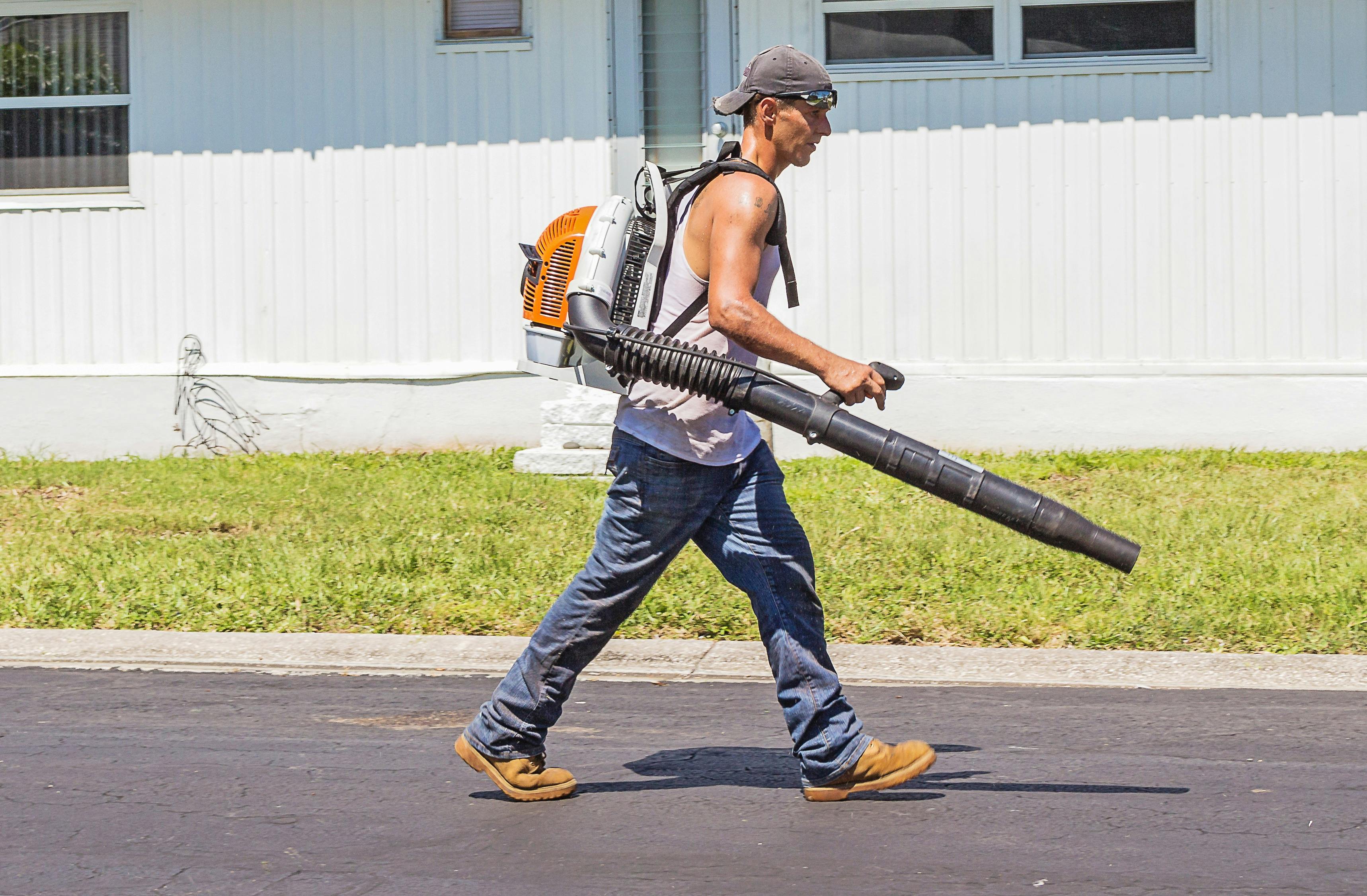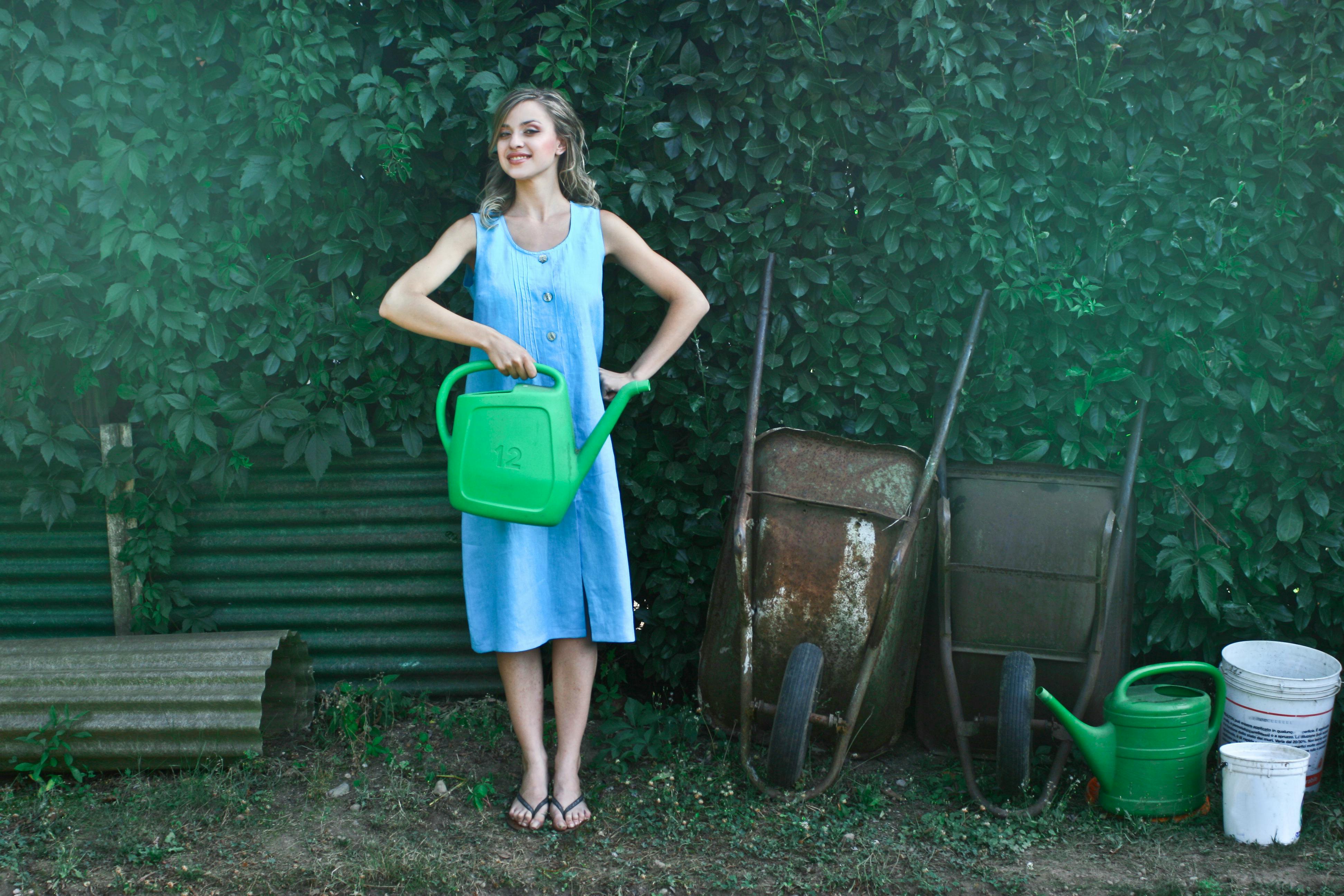What To Wear When Gardening

Gardening is an enjoyable and rewarding hobby that can be done year-round. It’s important to wear the right clothing when you’re gardening, so you stay comfortable and safe while you’re outside. Knowing what to wear when gardening can help make your gardening experience more enjoyable. From the right shoes to the perfect accessories, this guide will give you helpful tips on how to dress for success while gardening.When gardening, it is important to wear clothes that are comfortable and allow for flexibility. Choose loose-fitting clothing, such as jeans or shorts with a t-shirt or tank top. Wear shoes or boots that provide good support, since you will be standing and walking around in the garden. Additionally, be sure to wear a hat and sunglasses to protect your face from the sun. Finally, if it is chilly outside, layer up with a warm jacket or sweater to keep you cozy while tending to your plants.
Protective Clothing for Gardening
Gardening is a great hobby that not only brings pleasure but also provides you with fresh fruits and vegetables. As it can be a strenuous activity, it is important to protect yourself from the sun and other elements. Wearing the right type of clothing is essential for your comfort and safety. Here are some tips for choosing protective clothing for gardening.
The most important thing to remember is to wear comfortable clothes that allow you to move freely while gardening. Lightweight, breathable fabrics are ideal as they will keep you cool in hot weather and warm in cold weather. Look for clothes with UV protection, as this will help protect your skin from the sun’s harmful rays. Other good features to look for include adjustable waistbands, pockets, and built-in ventilation panels.
It is also important to choose clothes that are easy to clean, as gardening can get messy. Look for clothes that are machine washable or can be wiped down with a damp cloth after use. If you plan on doing any heavy-duty work such as digging or weeding, consider investing in some sturdy boots or shoes designed specifically for outdoor work.
Finally, don’t forget accessories such as sun hats, gloves, and sunglasses which will help keep you safe from the elements while you’re enjoying your garden. With the right protective clothing, you can enjoy gardening without worrying about getting too hot or cold or being exposed to harmful UV rays.
By following these tips when choosing protective clothing for gardening, you can ensure that your outdoor activities are both comfortable and safe.
Introduction
Protective clothing is any clothing specifically designed to protect the wearer from injury or infection. Protective clothing can be made from a variety of materials, including leather, metal, plastic, and other synthetic materials. It may also include special features such as fire retardant materials, protective footwear, and air-tight seals. Protective clothing is used in many different industries and professions to protect workers from hazards such as chemicals, electricity, heat, cold, and radiation. In this article we will discuss the different types of protective clothing and their uses.
Types of Protective Clothing
There are many different types of protective clothing available for industrial use. These can include: chemical protection suits; flame-resistant apparel; cut-resistant gloves; insulated garments; shoes and boots; welding blankets; hearing protection; respirators; safety glasses; face shields; hard hats; and full body suits. Each type of protective clothing has its own purpose and benefits.
Chemical Protection Suits
Chemical protection suits are designed to protect the wearer from exposure to hazardous chemicals. These suits are typically made of a heavy-duty fabric such as neoprene or polyvinyl chloride (PVC). The suit may also be fitted with an airtight hood or face shield to provide additional protection from inhalation of hazardous vapors or particles.
Flame-Resistant Apparel
Flame-resistant apparel is designed to protect the wearer from intense heat or flames. This type of apparel includes items such as overalls, jackets, gloves, boots, and helmets. Flame-resistant apparel is often worn by firefighters and industrial workers who work in hot environments or areas where there is a risk of fire.
Cut-Resistant Gloves
Cut-resistant gloves are designed to protect the wearer’s hands from sharp objects or edges that could cut or puncture the skin. These gloves are typically made of Kevlar or other strong synthetic fibers that resist cutting edges. Cut-resistant gloves are often worn by workers in industries such as construction or manufacturing who work with sharp tools or machinery.
Conclusion
Protective clothing is essential for workers in many industries and professions who are exposed to hazardous materials or conditions on a daily basis. It is important to make sure that you choose the right type of protective clothing for your job in order to ensure maximum safety and protection for yourself and your co-workers.
Hats
Hats are a timeless fashion accessory that can be used to complement an outfit or just to keep your head warm when the weather is cold. Hats come in a variety of styles from beanies to fedoras, and are made from materials such as cotton, felt, leather, and wool. Hats can also be adorned with embellishments such as feathers, ribbons, and beads. Whether you’re looking for a stylish new hat or something functional, there’s sure to be something that meets your needs.
Sunglasses
Sunglasses are a fashionable accessory that not only protect your eyes from the sun’s rays but also add a sense of style to any outfit. Sunglasses come in a variety of shapes and sizes including aviators, wayfarers, cat-eyes, and more. They can be made from materials such as plastic or metal, and often have mirrored lenses for added protection against the sun. With so many options available, you’re sure to find the perfect pair of sunglasses for any occasion.
Gardening Footwear
When it comes to gardening, there is a lot of work that needs to be done and the right type of footwear is essential. While you may think that any old pair of shoes will do, this is not the case. Not only can the wrong type of shoes damage your plants, but they can also cause you to slip and injure yourself. Therefore, it is important to choose the right type of footwear for gardening.
The most important thing to consider when choosing gardening footwear is comfort. You will be on your feet for long periods of time so you want to make sure your feet are comfortable and supported throughout. Look for supportive, lightweight shoes with good cushioning and arch support. Closed-toe shoes are also recommended as they will protect your feet from sharp objects such as tools or plants.
In addition to comfort, you also need to think about protection from the elements. This means looking for waterproof materials such as rubber or neoprene which will keep your feet dry in wet conditions. It is also a good idea to look for shoes with non-slip soles which will provide extra grip when walking on muddy surfaces or slippery rocks.
Finally, consider breathability when selecting gardening footwear. Look for mesh materials which allow air circulation and help keep your feet cool in hot weather. This will help prevent blisters and discomfort while working in the garden for long periods of time.
Overall, it is important to choose the right type of footwear for gardening in order to stay safe and comfortable while working outdoors. Look for supportive, lightweight shoes with good cushioning and closed-toe design; waterproof materials; non-slip soles; and breathable mesh materials which allow air circulation. With these features in mind, you can ensure that you select the right pair of shoes for all your gardening needs!

Gardening Gloves
Gardening gloves are an important part of any gardener’s arsenal. They provide protection from cuts and scrapes, as well as protection from dirt and grime. They also help to keep your hands clean while you’re working in the garden. Different types of gardening gloves are available, with varying levels of protection and comfort. Here’s a look at some of the most popular types of gardening gloves, as well as some tips on how to choose the right ones for your needs.
Leather gardening gloves are a great choice for those who want maximum protection and durability. They provide excellent grip and dexterity, making it easier to handle delicate plants or sharp tools. The downside is that they can be quite expensive, so they may not be an option for those on a budget.
Rubber or latex gardening gloves are a great choice for those who want more flexibility and breathability than leather gloves offer. They provide good protection from dirt and grime, but not as much protection against cuts and scrapes as leather gloves do. They’re also much less expensive than leather gloves, making them a great option for those on a budget.
Cotton gardening gloves offer good flexibility and breathability, while still providing decent protection from dirt and scratches. They’re also quite affordable, so they make an excellent choice for those who are on a budget or just getting started with gardening.
Finally, canvas or synthetic gardening gloves are another great option for those looking for good protection without breaking the bank. Canvas offers good durability while still allowing flexibility and breathability, while synthetics offer better grip and more protection against cuts and scrapes than both cotton or rubber options do.
No matter which type of glove you choose, make sure it fits properly so it doesn’t interfere with your ability to work in the garden. Choose one that is comfortable yet still provides enough protection against dirt, grime, cuts, and scrapes to keep your hands safe while you work in the garden.
Layering Clothing for Gardening
Gardening is a great way to stay active and spend time outside. To make sure that your time in the garden is comfortable, it’s important to layer your clothing properly. Layering your clothes ensures that you can regulate your body temperature as the day progresses and the temperature changes. By choosing the right fabrics, you can be sure that you’ll stay comfortable, while still being able to move freely.
Start with a base layer of synthetic or wool fabric that wicks moisture away from your skin. This will keep you dry and comfortable if you start to sweat while working in the garden. Cotton may seem like a good choice, but it tends to absorb sweat and won’t keep you dry. Choose a lightweight top and bottom in this layer so that they won’t be too bulky under your other layers.
Next, add an insulating layer for warmth on cooler days or if you will be out in the sun for an extended period of time. A softshell jacket is a great choice as it provides protection from both wind and water while still being breathable. Look for features like adjustable cuffs, hoods, drawstrings, or zippers that will allow you customize your fit as needed.
Finally, top off your look with a waterproof outer layer such as a raincoat or poncho. This will provide extra protection against rain and wind while still allowing air to circulate around you so that you don’t overheat. If you need more warmth on colder days, consider adding a hat or scarf for extra insulation.
By layering clothing correctly when gardening, you can make sure that whatever the weather brings, you’ll be prepared and comfortable throughout your outdoor activities.
Sun Protection When Gardening
Gardening is a great outdoor activity that can be enjoyed by all ages. However, it is important to take the necessary precautions to protect your skin from the sun’s harmful UV rays. Sunburns can occur quickly while gardening, so it’s important to wear the right clothing and use sunscreen. Here are some tips for protecting your skin while gardening:
Wear a wide-brimmed hat and lightweight, long-sleeved clothing. This will help protect your skin from the sun’s direct rays. Darker colors absorb more UV radiation than lighter colors, so try to stick to darker colored clothing when possible.
Choose a sunscreen with an SPF of at least 30 and apply generously before heading outside and reapply every two hours or after swimming or sweating heavily. Select a sunscreen that offers both UVA and UVB protection for the best protection against sunburns.
If you need extra protection, consider wearing sunglasses that block at least 99 percent of both UVA and UVB rays with lenses that are large enough to cover your eyes and surrounding areas.
Finally, seek shade whenever possible and limit your exposure to direct sunlight between 10 a.m. and 4 p.m., when UV radiation levels are at their highest in most climates.
By following these simple tips for sun protection when gardening, you can enjoy outdoor activities while keeping your skin safe from the sun’s harmful rays.

Conclusion
When it comes to finding the right clothing for gardening, there are several key points to consider. It is important to wear clothes that are comfortable, breathable, and protective. You should also think about the types of tasks you will be doing and choose clothing accordingly. For instance, when engaging in more strenuous activities like pruning or digging, you may want to choose items with extra pockets or built-in support for your back and joints. When working in hot climates, it is best to opt for lightweight, loose-fitting clothing made from natural fabrics such as cotton and linen. Finally, remember to always wear sturdy footwear and a hat for protection from the sun. With these guidelines in mind, you can ensure that you look and feel great while you garden!
